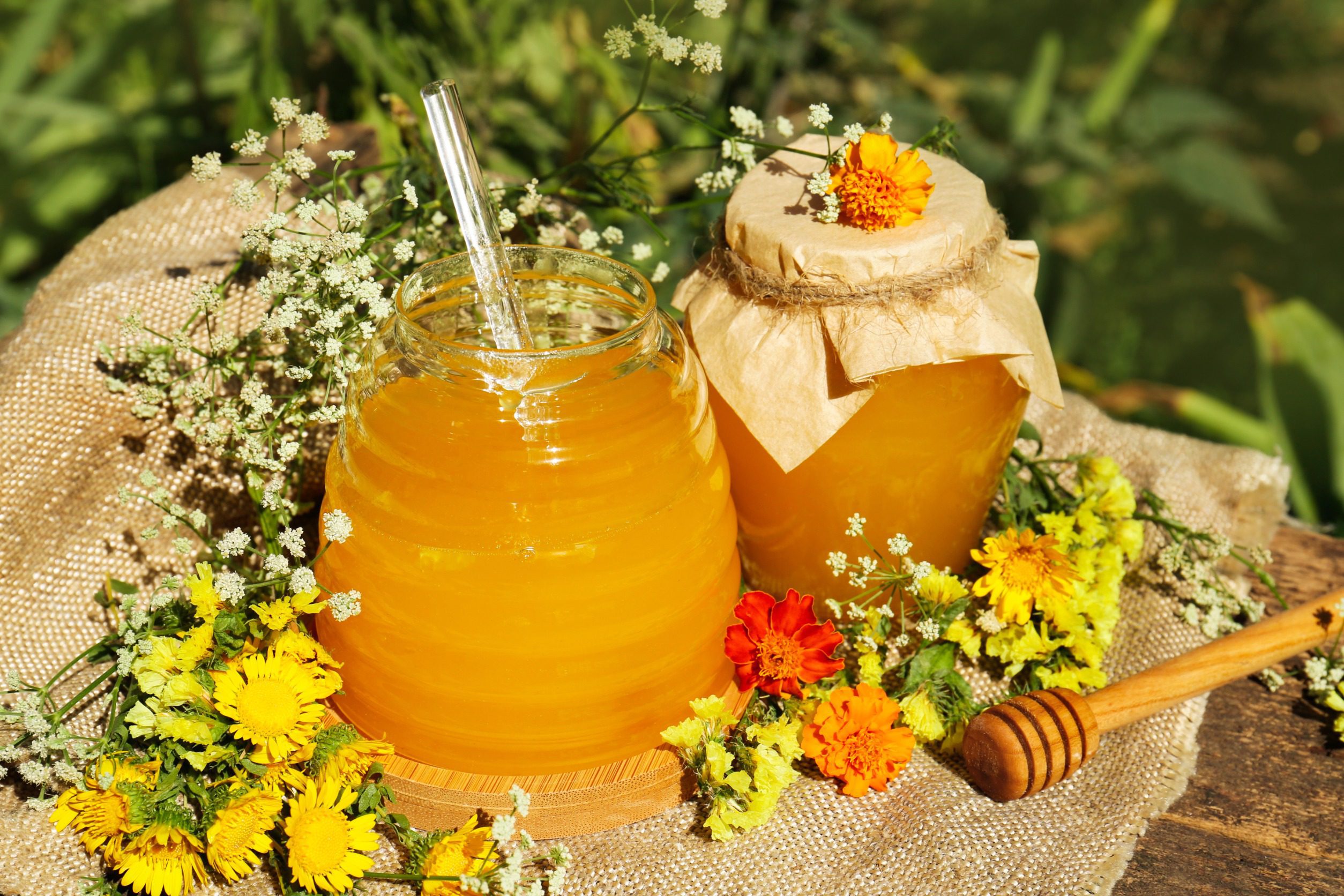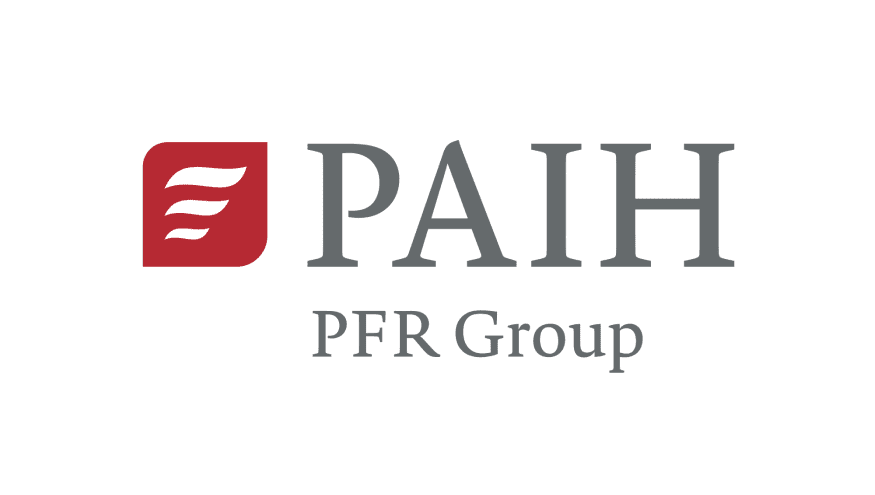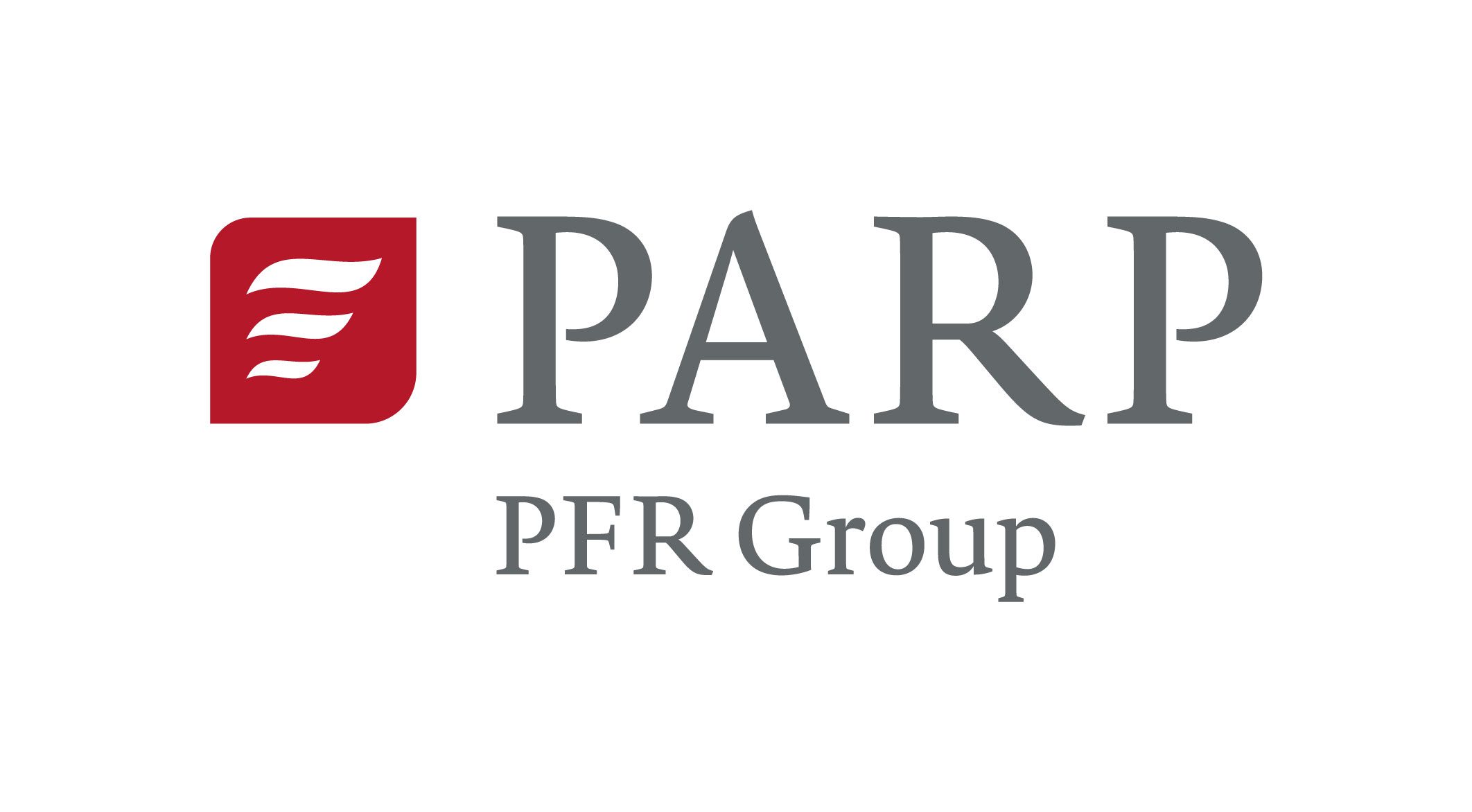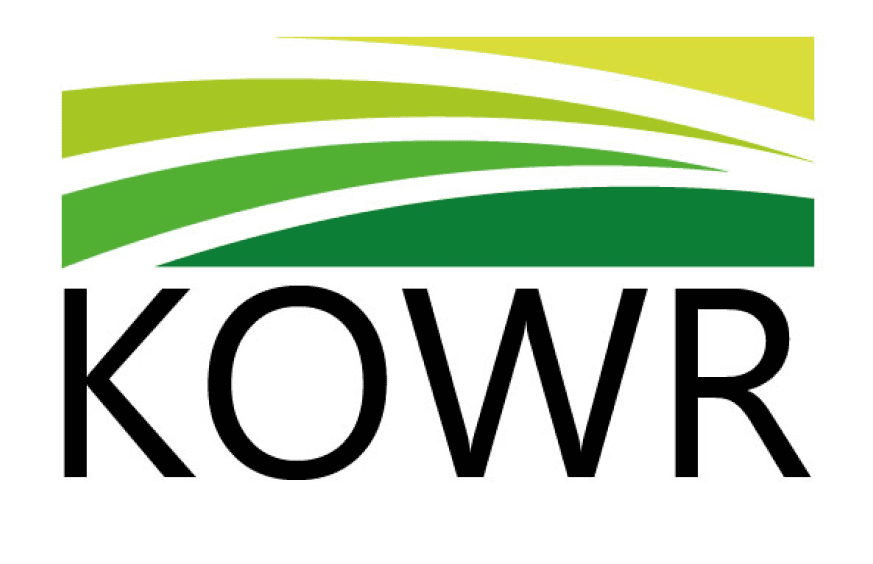Polish honey with the EU quality label
25.09.2023

Poland can boast of many honeys which have names recorded in the EU register of protected designations of origin and protected geographical indications. If you wanted to try them all, you would have to travel almost around the entire country as part of a sweet tour de Pologne!
Honey from the Beskid Wyspowy
We will start such a journey in the south of Poland among the areas of the Beskid Wyspowy covered with fir trees. It is here, in the Małopolskie Voivodeship, in the Limanowa and Myślenice counties, that the original native bee of the Kraińska breed (Apis mellifera carnica), by adapting to difficult climatic conditions, was created the local population of the Dobra line of bees. A number of valuable characteristics of this breed of the Krainska line of bees, combined with a long history of beekeeping in this area, which contributed to the development of the skills of local beekeepers, allowed for the emergence of this specific sweet delicacy, characterized by is exceptional quality against the background of honey known to us.
Honeydew honey from the Beskid Wyspowy is a liquid (possibly crystallized) honeydew honey produced from fir tree honeydew. Honeydew is produced on fir trees by aphids belonging to the species green fir honey bearer. These aphids take vegetable sap from fir tree branches, from which they use protein components, and excrete the remaining viscous liquid, that is, honeydew. Bees take honeydew from needles and fir twigs and from the undergrowth occurring directly under the fir trees. Honeydew initially has a pale colour, but quickly , among other things, pollen grains or spores of fungi and algae get into it. These added mixtures give honeydew honey from the Beskid Wyspowy a characteristic black-green colour. Honeydew honey from this area has an intense aroma, with a specific, resin-like smell, as well as a sweet, delicate taste.
Honey from the Podkarpackie region
Heading east, we will cross the border of the Podkarpackie Voivodeship. When speaking of local cuisine, it is impossible not to mention the Podkarpacki honeydew honey, registered by the European Commission as a protected designation of origin in 2010. The first sources related to beekeeping in this area come from the fifteenth century. Podkarpackie is a natural basin of coniferous forests with a predominantly share of fir trees. Hence, there is a huge potential for the production of honeydew collected by bees. Thanks to the long tradition of beekeeping in this region, local beekeepers have developed a high level of skills.
The effect of overlapping natures and human factors is the Podkarpackie honeydew honey, which is distinguished by a high content of microelements important for health, such as: magnesium, manganese, iron, copper, cobalt, calcium, phosphorus and others. This characteristic of the product is also due to its origin. The soils on which the fir trees grows are rich in mineral salts. These salts along with water are taken up by the trees, and then secreted by honeydew-producing insects and in this way find their way into the honey.
The characteristic dark colour of Podkarpackie honeydew honey comes from the type of fir trees occurring in the described area. This Polish honey is characterized by a higher than normative content of simple sugars, which, combined with moderate acidity, improves the taste bouquet of the honey and reduces the perception of sweet taste.
Honey from the Polish-Lithuanian borderland
After visiting the Podkarpacie region, it’s time for a long journey north, near the Polish-Lithuanian borderland. In the river Niemen basin, on the border of Poland and Lithuania, nectar bee honey is obtained – multifloral, liquid or crystallized. Registered by the European Commission as a protected designation of origin, honey from the Sejny region/Lazdijų/Lazdijų krašto medus is the first cross-border Polish product – producers from Poland and Lithuania applied jointly for registration! This honey is made on the basis of several dozen melliferous plants characteristic for this area, among others: various varieties of willows, maples, dandelion, raspberry, buckthorn, white and meadow clover, chamois, clover and other legumes, linden, cruciferous weeds, plums, plants from the umbellate, clove and labial families. Monoculture pollen can be found in honey only in trace amounts (in total no more than 5%). In no case may their presence alter the characteristic taste, smell and colour of honey. Honey has a very characteristic colour from dark yellow to dark golden. A distinctive feature of honey is its slight turbidity.
Honey from the Drawskie Lake District
If we want to get to know another Polish honey which has its name entered in the register of protected designations of origin and protected geographical indications, we should go to the Drawskie Lake District. The name of the Drahim honey obtained here comes from the name “Drahim”, the original name of the village Stare Drawsko, from which the whole region is named. Under the name “Drahim honey” five different honeys can be sold: buckwheat, rapeseed, heather, linden and multifloral. At the time of sale, Drahim honey can be liquid (patoka), creamy or crystallized (crumb).
Drahim honey is nectar bee honey. There may be small amounts of honeydew in this honey. The product specification also allows the sale of Drahim honey in honeycombs. The main distinguishing feature of Drahim honey, apart from the high content of guide pollen, is the share of pollen of unique relict and endemic plants. In multifloral honey, a special feature is the rich diversity of pollen composition, the share of none of the pollen exceeds 35%, thanks to which it is characterized by a rich bouquet of flavours.
Agricultural and Food Quality Inspection
It is worth mentioning here that the certification process of food products awarded with the protected geographical indication (PGI), protected designation of origin (PDO) or traditional guaranteed speciality (TSG) mark, as well as organic farming products in Poland, is supervised by the Agricultural and Food Quality Inspection (IJHARS).
The article was prepared by the GIJHARS (Main Inspectorate of Commercial Quality of Agricultural and Food Products) team, originally published on the office’s website.
Edited by PAIH
- Everything
- News (269)
- Events (167)
- Get Support (83)
- Polish companies (1123)
-

GPI POLAND SPÓŁKA Z OGRANICZONĄ ODPOWIEDZIALNOŚCIĄ
Industrial machinery and mechanical appliances and parts thereofShow allShow more Show lessGpi Tanks Poland designs and manufactures high-quality stainless steel tanks for various industries, including food, pharmaceuticals, and chemicals. Together with the Gpi Group, we specialize in the engineering, production, and installation of stainless steel process and storage tanks up to 12,500 m³, as well as process equipment. We offer full in-house engineering and manufacturing in both Poland and the Netherlands, delivering tailor-made tank solutions across Europe.

MPP SPÓŁKA Z OGRANICZONĄ ODPOWIEDZIALNOŚCIĄ
ServicesCultural and recreational servicesBusiness servicesIT and TelecommunicationConstructionTravelTransport and courier servicesYachtsShow allShow more Show lessWe develop and deliver professional Paint Protection Film (PPF) surface protection systems for the marine sector across Europe. Drawing on years of experience and close collaboration with boat manufacturers and service providers, we are proud to be a market pioneer in creating and supplying premium-grade Paint Protection Film (PPF) products tailored specifically for the marine industry. Our mission is to raise the standards of surface protection for yachts and boats .
-
 Article
ArticleAn Investment Agreement: safe guard the tax implications of your investment
See the benefits of an Investment Agreement and how to apply
 Article
ArticleThe Polish chemical sector – exports drive development
The Polish chemical sector is growing thanks to the export of cosmetics and household chemicals
-
 Event
EventBEAUTY FORUM & HAIR 2025
The Warsaw EXPO XXI Centre invites you to a fair for the cosmetics and hairdressing sector.
 Event
EventENERGETAB 2025
The Centre for Vocational Training invites you to the 38th International Energy Fair Bielsko-Biała E…
-
 Institution
InstitutionThe Investor Tax Service Center
The Investor Tax Service Center is a unit operating within the Ministry of Finance
 Institution
InstitutionPolish Investment and Trade Agency (PAIH)
The Polish Investment and Trade Agency (PAIH) is the partner of first-resort for entrepreneurs when …
-

GPI POLAND SPÓŁKA Z OGRANICZONĄ ODPOWIEDZIALNOŚCIĄ
Industrial machinery and mechanical appliances and parts thereofShow allShow more Show lessGpi Tanks Poland designs and manufactures high-quality stainless steel tanks for various industries, including food, pharmaceuticals, and chemicals. Together with the Gpi Group, we specialize in the engineering, production, and installation of stainless steel process and storage tanks up to 12,500 m³, as well as process equipment. We offer full in-house engineering and manufacturing in both Poland and the Netherlands, delivering tailor-made tank solutions across Europe.

MPP SPÓŁKA Z OGRANICZONĄ ODPOWIEDZIALNOŚCIĄ
ServicesCultural and recreational servicesBusiness servicesIT and TelecommunicationConstructionTravelTransport and courier servicesYachtsShow allShow more Show lessWe develop and deliver professional Paint Protection Film (PPF) surface protection systems for the marine sector across Europe. Drawing on years of experience and close collaboration with boat manufacturers and service providers, we are proud to be a market pioneer in creating and supplying premium-grade Paint Protection Film (PPF) products tailored specifically for the marine industry. Our mission is to raise the standards of surface protection for yachts and boats .

ARMEX MANUFACTURING SPÓŁKA Z OGRANICZONĄ ODPOWIEDZIALNOŚCIĄ
Industrial machinery and mechanical appliances and parts thereofOther instruments and apparatusElectromechanical appliances and parts thereofShow allShow more Show lessWe operate in the engineering and industrial branch since 2004. We comprehensively implement projects in the field of automation and robotics. We know how important are quality and punctuality that why we have our own machining department that also carries out external orders. We offer ➢ CNC precision turning ➢ CNC precision milling ➢ CNC serial turning ➢ Water jet and laser cutting ➢ Grinding ➢ Heat and surface treatment ➢ Welding ➢ Assembly of made elements

BIAŁA CEBULA PL S.C.
Fruit, vegetables, mushrooms and products thereofShow allShow more Show lessBiała Cebula PL and SMJA is a company specializing in sorting and packaging onions, potatoes, and other vegetables. Our mission is to deliver the best products that satisfy even the most demanding customers. With advanced technologies and high-quality standards, every vegetable leaving our facilities is fresh, carefully prepared, and properly packaged according to current retail trends. We focus on innovation and modern solutions, enabling us to produce efficiently and sustainably.
The Export Promotion Portal uses cookies to make it easier for users to use the website and for statistical purposes. If you do not block these files, you agree to their use and saving in the memory of your computer or other device. Remember that you can change your browser settings to block the storage of cookies. More information can be found in Privacy Policy and Terms and conditions.





